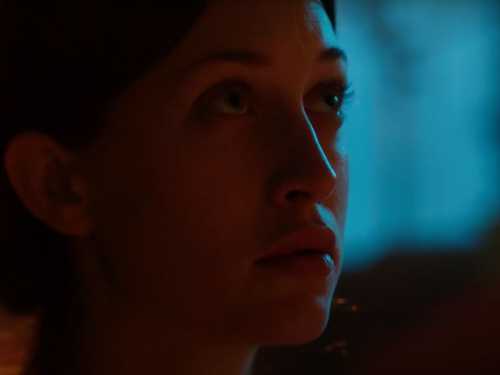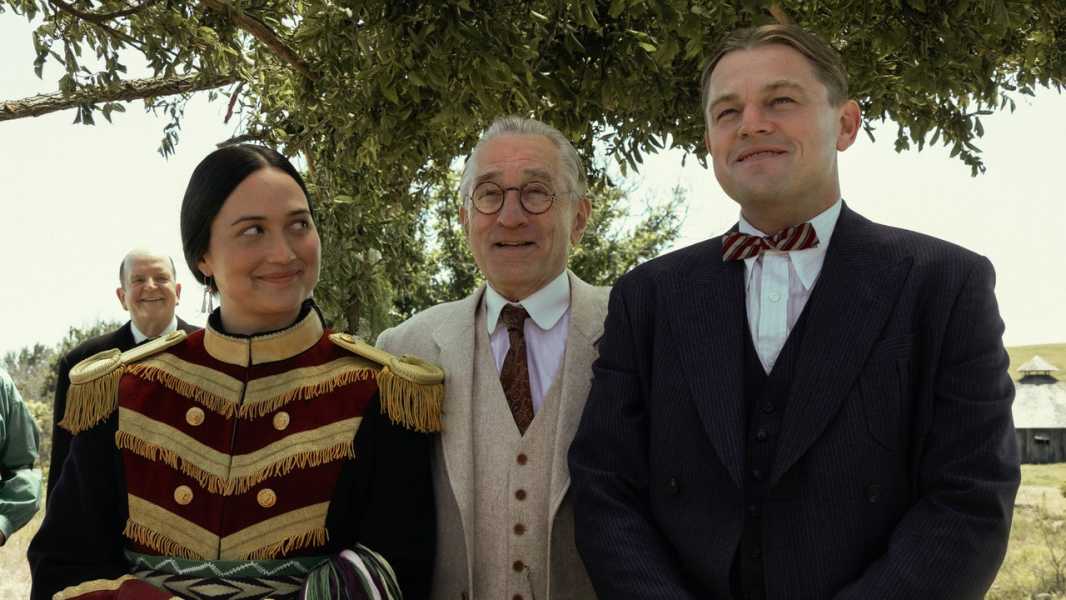
Save this storySave this storySave this storySave this story
If the Oscars are meant to display the film industry’s ideal image of itself, the choice of “Killers of the Flower Moon” and “Barbie” among the year’s best movies is evidence that the spirit of artistic audacity has survived the age of superheroic domination. Those two films are high on my list of favorites, too, and even many of the Best Picture nominees that I find less accomplished are nonetheless unorthodox, at least on the surface: there’s the sheer volume of historical intricacies in “Oppenheimer,” the blend of Victorian finery and steampunk grotesqueries in “Poor Things,” or even the coy macabre ironies of “The Zone of Interest.” Movies, even when their emotional world remains sentimental or programmatic, are getting stranger, and the Academy, with its recently expanded membership, is at least embracing the strangeness—at least, some of it.
The causes have to do with a long-term shift in the nature of movie viewing—largely, the dwindling of the suspension of disbelief. The vast amount of information about how movies are made, the proliferation of interviews about the process, and perhaps the sheer volume of moving images on view in daily life have made new generations of viewers fiction-skeptical. (The extreme popularity of superheroes and other fantasy coincides with, and amplifies, this skepticism about realist fiction.) Note how many of this year’s nominees are about the creation of fictions—such as “American Fiction,” “Killers of the Flower Moon,” “Barbie,” “Past Lives,” and “Anatomy of a Fall.” (And among the year’s most ingenious films on this subject is Wes Anderson’s “The Wonderful Story of Henry Sugar,” nominated for Best Live Action Short Film.)
The effects are as strange as the films, however. If, twenty-five years ago, the world of movies was drowning in realism, now it gets little respect (outside the sentimental realm). The success of “The Holdovers,” realistic though it might seem, has as much to do with its tone as with its substance: not only is it set in 1970 but it’s calculated to feel like a movie that could have been made then. (For all its emotional directness, the entire movie may as well be in quotation marks.) Yet many of the best movies that get made rely on taut and rigorous realism to achieve symbolic purposes; they get largely left behind, this year (films such as “Passages,” “Showing Up,” and “All Dirt Roads Taste of Salt”) as last (“Armageddon Time”). “Killers of the Flower Moon” is an exception—Martin Scorsese has always been an exemplary artist of self-transcending and symbolically rich realism, and his status as a master of the art, finally acknowledged by the Academy with his Oscar for “The Departed,” puts him in a category unto himself.
For all the spectacle, the Oscars remain resolutely earnest, as if serious subjects can somehow confirm the social value of the industry. History always helps; so do artistic heroes. The bio-pic is, for would-be serious people, the equivalent of the superhero film— personality-based history preprogrammed with its tales of virtue and tragedy. Yet I also detect something like a backlash, a kind of political exhaustion, in this year’s roster: to put it bluntly, the dominance of historical films involves the fighting of old battles already resolved, at least in principle. (I’d expected far more attention to be paid to “Origin,” both by critics and by the Academy, but the fact that it wasn’t may attest to the film’s troubling power: its truthful reckonings with history and with current injustices that have rattled both the industry and the nation may be too close for comfort.) Bio-pics also provide a reliable Oscar shot for actors. The incarnation of a historical figure is calculable in a way that the playing of fully fictional characters isn’t: there’s a preëxisting standard, a historical record that can be consulted, even archival footage that can be viewed, and the resulting performances offer a kind of virtuosity that also seems to reflect seriousness of purpose. (Emma Stone’s performance in “Poor Things” displays a similar virtuosity: the role’s language games make her achievement more obvious than if her character were speaking ordinary English.) It’s hard to see any reason other than the preference for earnest virtue for Margot Robbie’s lack of a nomination for starring in “Barbie.”
The same goes, of course, for Greta Gerwig not to have been nominated for directing it. Many critics, and apparently many in the industry, can’t see past its stylized surfaces to its substantial ideas. Though I’m delighted to see “Barbie” acknowledged in many categories (including for its screenplay and its supporting performances), it’s enraging that the two people principally responsible for its essence—in substance and in style—have been left out of the running. This is partly because, as usual, comedy gets no respect. (Much as I admire America Ferrera’s performance in “Barbie,” it brings to life an essentially non-comedic role.) And it pains me to note that the directors’ branch of the Academy, which (like all other branches) picks the nominees in its category, has no sense of style. They have something of a sense of stylization—Yorgos Lanthimos’s “Poor Things” is a profusion of theatrical artifice, albeit with hardly an original image to be found in it—but there’s neither an acknowledgment of Anderson’s “Asteroid City” or Michael Mann’s “Ferrari,” either.
I’m fascinated by the coalescence of critical opinion and the Oscar nominations. Perhaps because of social media, people working in the business, here and internationally—yes, the Academy is indeed international—seem increasingly susceptible to what the reviews say. That’s why France—or at least, the official commission that chooses the country’s entry for Best International Feature—must be kicking itself. I’d pretty much taken for granted that the choice would be “Anatomy of a Fall,” Justine Triet’s spiky tale of legal mystery and marital conflict, which was widely acclaimed and won the top prize at last year’s Cannes Film Festival; instead, France selected “The Taste of Things,” a far more sentimental film. As a result, “Anatomy,” which could probably have been the presumptive winner of the International Feature category, has five nominations and, I’d bet, is unlikely to convert any of them to a win, while “The Taste of Things” didn’t even get nominated. Not that international films, as I mention below, had a particularly stellar year. All the same, it was nonetheless a great year for movies in general—at least, if one judges by the artistic achievement that the best of them represent—and the presence among the nominees of several of the year’s actual best movies on the Oscar roster is all too rare a treat.
BEST PICTURE
“Killers of the Flower Moon”“Asteroid City”“Barbie”“Showing Up”“All Dirt Roads Taste of Salt”“Passages”“Earth Mama”“A Thousand and One”“Pinball: The Man Who Saved the Game”“Ferrari”
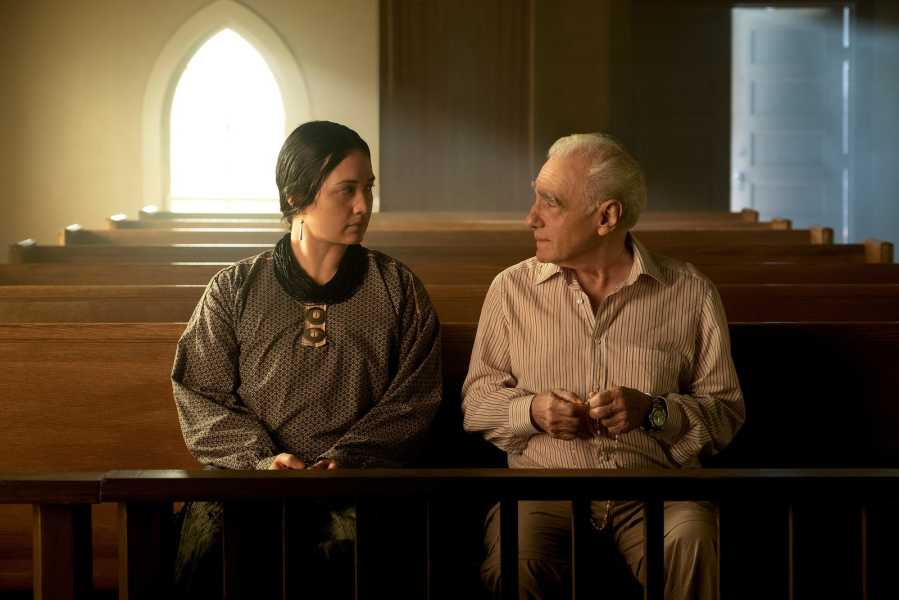
Lily Gladstone and Martin Scorsese.Photograph courtesy Apple TV+
On the basis of moment-to-moment inventiveness and insight, “Asteroid City” is hard to beat, in any year, by anyone. But “Killers of the Flower Moon” takes on a subject with much higher stakes and adds to it a much greater challenge of scope. The composer Morton Feldman said, of musical compositions, “Up to one hour you think about form, but, after an hour and a half, it’s scale,” and, if you change those numbers to two hours and two and a half hours, respectively, the same is true of movies. Never a minimalist, Scorsese, with “The Irishman” and now with “Killers,” has entered two unusual categories at once: the films are teeming, even overwhelming, in action and substance as well as in duration, yet they’re also stark and spare “late films,” displaying a longtime filmmaker’s brusque clarity. He gets straight to the essence of his complex and far-reaching stories; his apparently transparent realism reverberates with the secrets and mysteries at its heart. (Both films rely on the same classical trope, a deeply principled woman’s silence—they’re centered on the two great Cordelias of the recent cinema.) Yet the end of “Killers,” Scorsese relies on brilliant dramatic sleight of hand to convey regret for how little he has been able to do, and it casts the entire movie in the light of how much remains to be done, now and in generations to come. It’s a historical film that points to the future of the art.
The best films of the past year have displayed exceptionally daring, even reckless ingenuity, and have left conventional styles and methods far behind. All the more remarkable, some that pushed the envelope furthest were big-budget films produced by major companies. Yet, as has often been the case in recent years, the list of the best movies of 2023 includes many low-budget independent productions. Though the Academy hasn’t exactly snubbed that kind of movie in recent years—think of “Moonlight” and “Nomadland”—its membership has nonetheless been chary with its acknowledgment of such movies. And this year is no different: only one such movie, “Past Lives” (perhaps at the high end of low-budget filmmaking), is among the Best Picture nominees.
BEST DIRECTOR
Wes Anderson (“Asteroid City”)Greta Gerwig (“Barbie”)Martin Scorsese (“Killers of the Flower Moon”)Kelly Reichardt (“Showing Up”)Raven Jackson (“All Dirt Roads Taste of Salt”)
In a way, the year’s best picture is by definition the best-directed one, because, contrary to the myth perpetuated by the artifice of screen credits, directing isn’t separate from screenwriting—or, for that matter, from acting, editing, cinematography, production design, and so on. (It’s no coincidence that many of the performers who get nominated for awards are in movies for which the directors, too, have been nominated.) Separating movies from direction is an artifice akin to offering separate literary awards for best novel and best writer—yet, put that way, the logic of the artifice begins to reveal itself. The Oscars hold a prism up to movies’ projected beams of light and break them up into discrete components, with direction implicitly defined as what’s done to turn a script into a movie. Wes Anderson’s onscreen creation of extraordinary events—the kaleidoscopic rapidity with which nuances crash against nuances in intricate patterns that are then completely reconfigured with shifts in tone and jumps in action—is matched by the imaginative freedom of his images, the sharply etched precision of the performances, and realms of physical design that feel like instant museum exhibits. Anderson’s ability to bring intricately envisioned worlds to light approaches the comprehensive creations of great silent-film directors such as Erich von Stroheim and F. W. Murnau, and of rarefied moderns such as Max Ophüls and Luchino Visconti. We will collectively kick ourselves—or, rather, history will kick us—for having treated Anderson’s art like common coin.
This year, another director, Greta Gerwig, offers a grandly stylized and meticulously detailed cinematic vision to rival Anderson’s, with a tone, a manner, and ideas entirely her own. But there are other forms of directorial distinction, too; all movies are also essentially documentaries, and Raven Jackson and Kelly Reichardt show how much imagination and originality can emerge from the apparently realistic depiction of ordinarily visible events, with the images of “All Dirt Roads” reaching the span of myth, those of “Showing Up” burrowing passionately into an artist’s psyche.
BEST ACTRESS
Lily Gladstone (“Killers of the Flower Moon”)Margot Robbie (“Barbie”)Teyana Taylor (“A Thousand and One”)Michelle Williams (“Showing Up”)Charleen McClure (“All Dirt Roads Taste of Salt”)
The virtuosity and range, and the many facets of comedy (verbal and physical, subtle and outlandish), that Margot Robbie projects in “Barbie” are unique—and all the more outstanding in the current, stunted environment of movie comedy. (She also co-starred in one of the few great recent comedies, “The Wolf of Wall Street.”) But Lily Gladstone does more with thought, in “Killers of the Flower Moon,” than most actors ever achieve with flagrant and spectacular action; her presence fills the screen with what used to be understood as star power (before the mainly technical prowess of conservatory-trained actors became a mark of Hollywood dignity). The role she plays is one of tragic complexity; blatant theatrics would have vitiated its grandeur. The tense self-restraint that’s written into the character converges with that of Gladstone’s performance.
Awards are only vague approximations of the full experience of watching and pondering movies—for example, how to deal with the notion of the ensemble cast in a list of awards that lacks that category. (There should at least be an award for Best Casting.) In “All Dirt Roads Taste of Salt”—which spans more than half a century in the life of its main character and features four different actors to portray her at different ages—there are two lead actresses and two lead actors. Charleen McClure, who plays the protagonist in the prime of adult life, delivers the year’s best monologue, in a six-minute scene on which the movie pivots—and, in a film as dramatic in silence as it is in speech, she’s also grandly expressive with postures, gestures, and gazes. Even to describe the commanding role that Teyana Taylor inhabits in “A Thousand and One” is to give away precious details of its melodrama of maternal love; suffice it to say that Taylor renders the intertwined passions of family and secrecy, a settled life and a life on the run, with inspired and terrifying fury. In “Showing Up,” the quiet, grim dedication of a low-budget sculptor—a great small-scale artist with a frustrating day job and troubles with family, friends, and her frenemical landlord slash competitor—to her work is fiercely, radiantly energized by Michelle Williams.
BEST SUPPORTING ACTRESS

Danielle Brooks and Fantasia Barrino in “The Color Purple.”Photograph courtesy Warner Bros. PicturesDanielle Brooks (“The Color Purple”)Crystal Reed (“Pinball: The Man Who Saved the Game”)Julianne Moore (“May December”)Penélope Cruz (“Ferrari”)Sigourney Weaver (“Master Gardener”)
There are many ways for thoughtful acting to manifest itself, including in the kind of explosive energy that Danielle Brooks displays in “The Color Purple.” Her singing, her swagger, her uninhibited bluster are inseparable from the quiet agony that she expresses regarding a world that found ever crueler ways to repress defiant Black women and that, in many ways, still does. Her performance, filled with history, also lives intensely in the moment.
Here’s the thing about Crystal Reed’s performance in “Pinball”: she hasn’t appeared in any other prominent movies. It remains to be seen whether she has the range of the other, more experienced nominees; but the history of cinema proves that good directors discover, cultivate, and showcase the art of actors overlooked by other filmmakers. Yet guiding too-little-known actors through striking performances isn’t the same as discovering stars; sometimes an actor is just a star for the duration of one particular movie. I hope that Reed gets to expand on this work in many prominent roles to come, but there’s something to be said for the charismatic power that established stars emanate, and, in their films this year, Penélope Cruz, Julianne Moore, and Sigourney Weaver all deploy such power deftly and vigorously to create characters who themselves have it and flaunt it.
BEST ACTOR
Franz Rogowski (“Passages”)Jason Schwartzman (“Asteroid City”)Zac Efron (“The Iron Claw”)Adam Driver (“Ferrari”)Mike Faist (“Pinball”)
The fury at the center of “Passages” is unleashed gracefully, lightheartedly, by Franz Rogowski, in the role of a director whose determination is as straightforwardly relentless as his personality is complicated, and whose emotional and practical turmoil are nonetheless liberating. Jason Schwartzman is the Jean-Pierre Léaud of this era, both helping to create a New Wave of movies and symbolizing it. His art is tapped most deeply by filmmakers who share his probing sensibility, who, rather than simply grafting his singular manner onto their movies, actually challenge it with new ideas. In “Pinball,” Mike Faist—who was hailed for a theatrical performance in “West Side Story”—subtly and warmly inhabits the film’s quizzical protagonist; he endows the role of a pinball-obsessed writer in the nineteen-seventies with a wry candor and a bouncy energy that match the real-life story’s sense of wonder. Adam Driver and Zac Efron both bear the weight of ferocious competitors, albeit at opposite sides of the cultural spectrum; Driver embodies Enzo Ferrari’s elegant determination to establish an auto-racing dynasty and keep his company afloat, and Efron lends power and pain to Kevin Von Erich’s muscular pursuit of a pro-wrestling championship and his attempt to protect his brothers and himself from their domineering father.
BEST SUPPORTING ACTOR
Ryan Gosling (“Barbie”)Jake Ryan (“Asteroid City”)William Catlett (“A Thousand and One”)Hinata Hiiragi (“Monster”)Ben Kingsley (“Dalíland”)
Ryan Gosling’s talent has never been in doubt, but his range has long struck me as limited by an overheated earnestness that, in “Barbie,” Gerwig converts to comedic sparkle. It’s an uninhibitedly playful performance in which Gosling appears to revel in the movie’s exuberance and in his own hitherto untapped powers. Jake Ryan, who’s all of twenty, has long been an auteur magnet—see his work in the Coen brothers’ “Inside Llewyn Davis,” the Safdie brothers’ “Uncut Gems,” and Bo Burnham’s “Eighth Grade”—but his collaboration with Wes Anderson is long-standing, dating back to “Moonrise Kingdom,” from 2012, and also “Isle of Dogs.” The collaboration is a mutual mark of distinction, because Anderson’s films reveal a special sensitivity to the lives of children and teens, and to the artistry of young actors. Because of his distinctive style, his young actors need a peculiar set of talents and personalities—ranging from verbal agility to tenderness—and, in “Asteroid City,” Ryan, playing a double role (as do many of the actors in the movie, which offers a complex nested narrative), brings several of the year’s supreme scenes and moments to life with a display of precisely those qualities. In “A Thousand and One,” William Catlett delivers an enveloping warmth by way of a tightly contained heat; his performance, as a man who at first grudgingly but ultimately lovingly devotes himself to a fatherless child, is as hearty as it is nuanced. There’s also a strange pairing of contrasts in the idiosyncratic manner and the stifled vulnerability of the performances of Hinata Hiiragi, as a bullied gay child in a provincial Japanese school, and Ben Kingsley, as the aged Salvador Dalí looking to pull off one great last exhibit in New York.
BEST CINEMATOGRAPHY
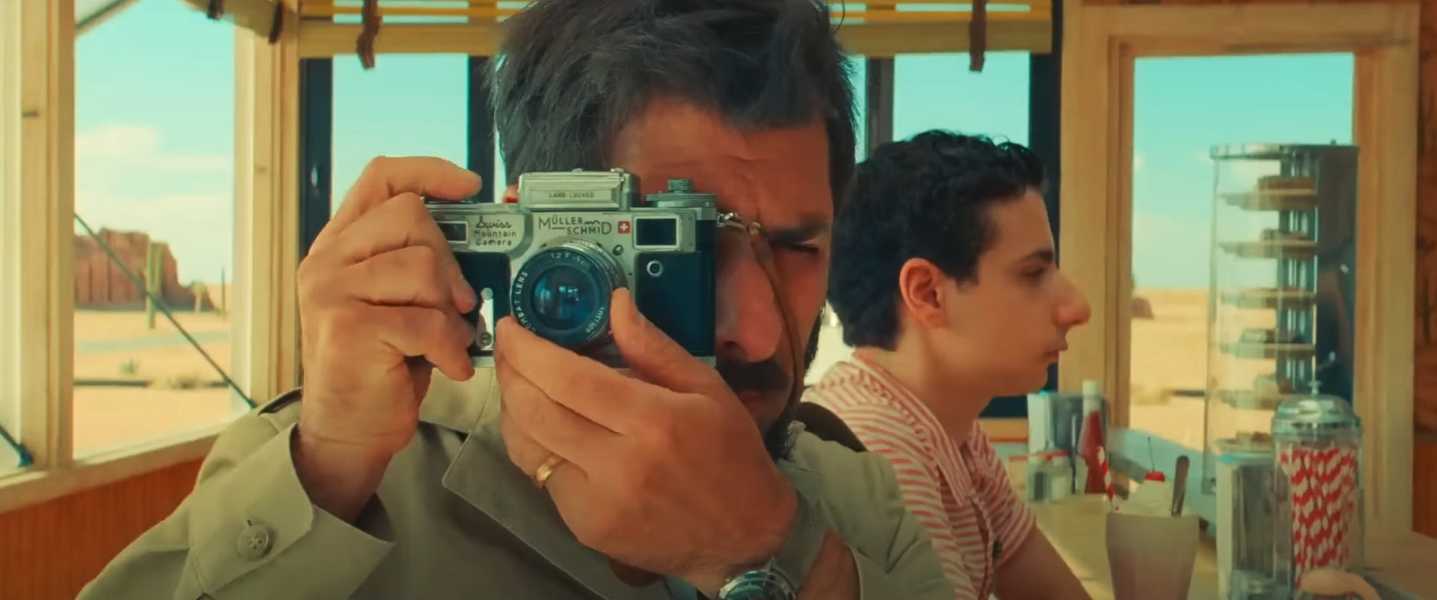
Jason Schwartzman and Jake Ryan in “Asteroid City.”Photograph © Focus Features / Courtesy Everett“Asteroid City”“Barbie”“All Dirt Roads Taste of Salt”“Showing Up”“Earth Mama”
The award means “best images” and should usually go to the year’s best film. This year is different, because one of the things that makes “Killers” the best movie is that it’s different in kind from the year’s other movies. Its images are indeed powerful but its vast conceptual purview has with a metacinematic essence, and, for Scorsese, a man of the image, that fact is a kind of self-scourging; his is a tormented film with a form that embodies spiritual torment. One image in “Asteroid City,” of midday sunlight dappling characters under a trellis, is the year’s best, and, when I think about that movie, I remember the compositions and the camera moves, the framing and the tone of light as if they were music. “Barbie” offers a similarly copious yet precise visual sensibility, one that’s more brash and uninhibited and full of surprises. “All Dirt Roads Taste of Salt,” “Showing Up,” and “Earth Mama” do a similar thing in different ways—they make use of straightforward, nearly documentary-style observations to drastically divergent yet consistently lyrical results.
BEST ADAPTED SCREENPLAY

Ryan Gosling and Margot Robbie in “Barbie.”Photograph courtesy Warner Bros. Pictures“Barbie”“Origin”“Killers of the Flower Moon”“Ferrari”“Orlando, My Political Biography”
It doesn’t matter whether Gerwig and Noah Baumbach’s script for “Barbie” is deemed original, as by the Writers Guild, or adapted, as by the Academy; it’s one of the best of the year in either case. I annually remind myself that screenplays are more than dialogue, and, though the dialogue in “Barbie” is deliciously pointed and funny, the script is also an extraordinary template of extravagant fantasy that’s held together with reason and undergirded with ideas that reach far beyond the story at hand into the realm of cinema at large. The story ramps the notion of adaptation up to radical revision—as proved by the very fact of the disagreement about whether this script is original or adapted.
The script for “Killers of the Flower Moon” demonstrates a similar idea with its drastic reconfiguration of the New Yorker writer David Grann’s nonfiction book to emphasize the extrapolated, fictionalized marriage story at its center. Meanwhile, in “Origin,” Ava DuVernay does something I’ve never seen before, at least, not in a Hollywood-proximate movie: the movie is a fictionalized story about the writing of a nonfiction book (that’s the adapted work), and the onscreen adaptation is an intertwining of fiction and nonfiction. The script for “Origin,” like the one for “Barbie,” similarly represents a conceptual leap into a category unto itself. “Orlando: A Political Biography” reverses the method of “Origin”: the philosopher Paul B. Preciado, making his first film, adapts Virginia Woolf’s novel “Orlando” and—by casting more than twenty trans and nonbinary actors in the title role and integrating their personal stories into the movie as well as the practical details of the filming itself—expands Woolf’s work of fiction to include a virtual documentary about trans lives.
BEST ORIGINAL SCREENPLAY
“Asteroid City”“Showing Up”“All Dirt Roads Taste of Salt”“Pinball: The Man Who Saved the Game”“A Thousand and One”
Where most other screenplays feel assembled with carpenters’ tools, “Asteroid City” seems to be made by jewellers yet on a similar scale—it fills a large dramatic span with an enormous and rapid-fire quantity of intricately filigreed details and micro-events, and it evokes grand emotions with delicate and oblique gestures. (A scene of teen prodigies playing a memory game turns out to be among the most ardently romantic scenes of the year.) What’s more, its nesting of stories within stories, offering many in its cast a ricocheting set of multiple roles, is both giddily delightful and historically resonant. “Pinball,” a far more straightforward tale—set in the nineteen-seventies and based on a true story—offers insight and wit along with a similarly striking frame-break: the inclusion of the now aged real-life protagonist (comically, played by an actor) as a character who intrudes on the action to comment on it as it unfolds. “All Dirt Roads” is a more overtly intricate film, threading a half century’s tale with a complex interweave of time that yields a graceful and passionate unity.
BEST FILM EDITING
“Killers of the Flower Moon”“Asteroid City”“Barbie”“All Dirt Roads Taste of Salt”“Ferrari”
What marks great editing is a sense of dramatic necessity that also communicates imaginative freedom—that it must be this way because it felt right to make it so. Though Scorsese’s film follows time’s arrow, it does so in a surprisingly meandering and digressive journey, skipping about in time as if the tale were being told, from offscreen, by a spellbinding bard, deft yet sombre. (It’s what “Oppenheimer” tries to do and does thuddingly.) In “Ferrari,” more important than speed is rhythm—the right move at the right time—so that, regardless of tempo, the movie delivers the feeling that each moment is critical and demands decisive action.
BEST DOCUMENTARY FEATURE

A scene from “Menus-Plaisirs—Les Troisgros.”Photograph courtesy Zipporah Films“Menus-Plaisirs—Les Troisgros”“Orlando, My Political Biography”“Our Body”“Four Daughters”“The Disappearance of Shere Hite”
The nonagenarian Frederick Wiseman, with only a cameraperson, a sound recordist, an assistant, and a telepathic sense of what makes things tick, takes the long view of the Troisgros family’s celebrated restaurant in rural France. He reveals this luxurious temple of haute cuisine to be a mighty edifice of knowledge and culture, with deep roots in tradition and terrain undergirding its pleasures. The competition is strong, however, and many of the best documentaries this year are ones that import techniques of fiction into their nonfictional reënactments. That’s what Preciado does in “Orlando,” which, while also a scripted film, is a documentary about both the process by which his cast of trans and nonbinary actors take on the role of Virginia Woolf’s eponymous character and the real lives of those actors. Kaouther Ben Hania does something similar in “Four Daughters,” the story of a Tunisian single mother named Olfa, two of whose four daughters left home as teen-agers to join ISIS; because those two girls are still missing from the family, two professional actresses are integrated into the family to play them. “Our Body” is, for the most part, an observational documentary, set in a Paris women’s hospital, where the director, Claire Simon, blends empathetic attention to patients with exacting curiosity about medical science and practice—and then becomes a patient there herself. “The Disappearance of Shere Hite,” directed by Nicole Newnham, is a more conventionally research-based documentary but an exceptionally engaging and informative one. It combines archival material and recent interviews to create a portrait of a crucial feminist activist and writer—one whose investigations, in the nineteen-seventies, into women’s sex lives brought about both a revolution in attitudes and a vehement anti-feminist backlash, with devastating results (see the title) that turn the historical reflection into a real-life mystery.
BEST INTERNATIONAL FEATURE
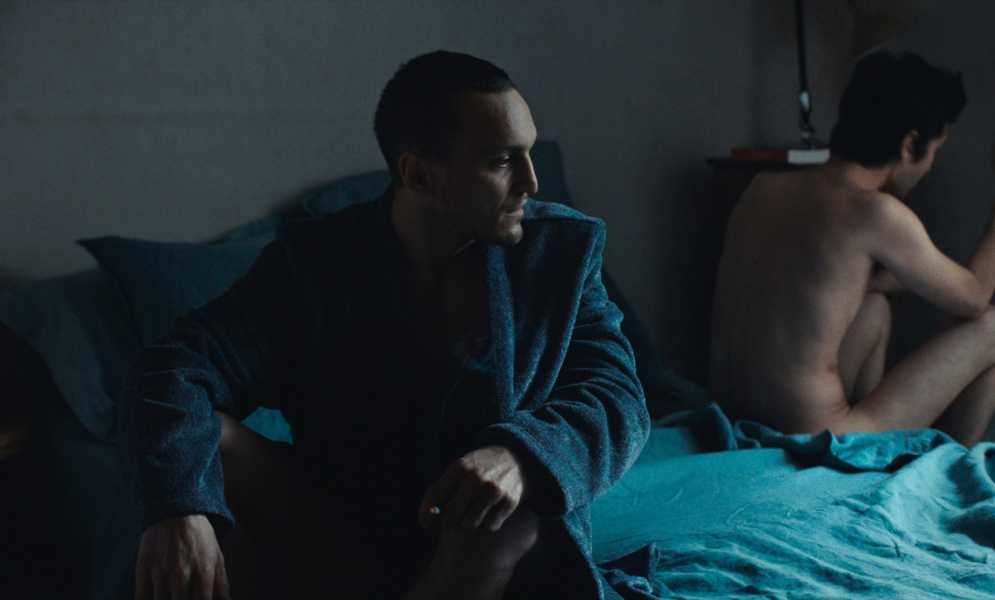
Franz Rogowski in “Passages.”Photograph courtesy MUBI“Passages”“Petite Solange”“Walk Up”“White Building”“Full Time”
2023 wasn’t a strong year for international films—at least, not for ones that had U.S. theatrical releases—but that fact is as meaningless as is the notion of a year in movies, which depends heavily on the vagaries of completion dates and release schedules; the sample size is too narrow and artificial to draw wider conclusions from. Remarkably, the year’s best international film, “Passages,” is drastically international, made in Paris by an American director, with a German lead actor and British and French ones in supporting roles. It’s a wildly liberating film, the very subject of which is freedom of identity—even, indeed, freedom from identity.
The French director Axelle Ropert’s “Petite Solange” is among the most delicate yet vigorous recent movies about an adolescent’s coming of age, and it’s refreshingly detached from the overused trope of a sexual awakening. It’s the story of a confrontation with divorce and its related disturbances. Ropert both elicits a great lead performance from the film’s young actress (Jade Springer—who’d be number-six on my Best Actress list) and inextricably bonds the look of the film to the protagonist’s inner life. The South Korean director Hong Sangsoo, as prolific as ever, had two new films in U.S. release in 2023; in “Walk Up,” under the modest cover of a reunion of old friends in a multistory building in Seoul, he probes the mysteries of art, the challenges of aging, and the anguish of the overlapping personal and professional realms that comes with independent filmmaking itself. “White Building” also blends documentary and drama in the Cambodian director Kavich Neang’s drama about the threatened demolition of a real-life apartment complex in Phnom Penh, one family’s efforts to organize opposition and resist eviction, and one young man’s assessment of his prospects—or lack of them—in his home town. “Full Time,” directed by Eric Gravel, is a sort of neo-realist action film, in which a single mother and a former executive, now working on the housekeeping staff of a Paris hotel, struggles to find a new job amid troubles with child care and transportation. Its high-stress drama of elaborate ruses and desperate expedients blends with a multilevel view of French politics, from street level to national bureaucracy. ♦
Sourse: newyorker.com

